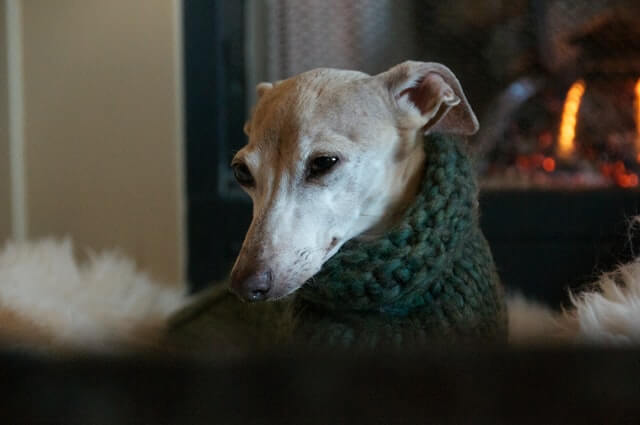Free UK Delivery on all orders over £70
Free worldwide delivery for all keyrings
Free worldwide shipping for all keyrings
- Dog Moda offers free delivery on all keyrings. Moreover, we currently offer free delivery to the UK on all orders over £70. Great opportunity to compliment your leather sighthound collars for whippets, lurchers, greyhounds and other hounds with quality diamond dog collars, charms, tassels, stylish key rings, leather dog leads and other stylish fashion accessories for sight hound.
- Free delivery for all keyrings and pin brushes + grooming combs
Free full refunds of hound collars dog leads from Dog Moda
Free full refunds of hound collars, leather dog leads & stylish sighthound accessories
We hope that you and your hound will love Dog Moda products. After all, we only sell hound collars, leather dog leads and sighthound accessories which we are happy to use on our own beloved dogs.
However, if for any reason you or your hound are not completely happy with the quality of our sighthound products, we offer returns with a full refund.
You have14 days after receiving our sighthound collars, dog leads or other hound accessories to decide if you want to keep them or return to us in the original condition for for a full refund.
Gifts with every order of hound collars and dog leads from Dog Moda
Free gift with hound collars, leather dog leads & stylish sighthound accessories
Dog Moda customers get small but functional presents. Every hound collar and leather dog lead bought from our website comes with free reflective dog dangler tag.
Dog Moda - Hound collars, leather dog leads, stylish sighthound accessories
The Italian Greyhound temperament – what's so special about it?

Understanding the Italian Greyhound temperament
As far as the Italian greyhound temperament is concerned, a typical dog of this breed is often playful, affectionate, smart, and has a kind disposition. They tend to be more submissive and live to please their owners.
An Italian greyhound pays a good deal of attention to the tone of voice you use. If IG senses that you're too soft, it may not listen to you, which, contrarily, can also occur if you're too harsh.
Italian greyhounds are great at socializing with people, though they can become either skittish or shy if their owners overprotect or "baby" them.
A little bit about the Italian Greyhound
The Italian greyhound is considered a sight hound, or "gazehound." Other sight hounds include the Whippet, Scottish deerhound, Greyhound, Saluki, and Afghans amongst others.
What this means is that the Italian greyhound hunts by using its sight and speed, as opposed to having scent and endurance as its strengths like scent hounds do. Some examples of scent hounds include Basset hounds, Beagles, and Bloodhounds.
What does an Italian Greyhound look like? (size, weight and colour)
The Italian greyhound is actually the smallest member of the sighthound family – a result of selective breeding. On average, they weigh between eight and 18 pounds or so, and stand between 13 and 15 inches tall.
Interestingly, the colour of the Italian greyhound's coat is often debated when it comes to competition. Organizations like the American Kennel Club accept partly coloured greyhounds, whereas the FCI (Federation Cynologique Internationale) standard only allows for white on the dog's chest and feet.
Why exercise is important for the Italian Greyhound
This breed can become withdrawn if they are not properly exercised. And we are not talking Husky-type exercise either – just a simple daily walk will do. The Italian greyhound is an athletic dog, though, so they love to run.
However, it is important to keep an eye on them especially while IG's are young, since, like a young human, they may attempt to clear an obstacle that's too much for them, injuring themselves in the process.
One such common injury for Italian Greyhound breed is broken legs, due to some lineages often having a history of poor bone density.
Training an Italian Greyhound 
You can work with an Italian greyhound temperament by being calm with them and by expressing an air of natural authority. As long as you are consistent, they should not be a problem to train.
It is important to keep in mind that, should you end up in a stressful situation with your Italian greyhound, you should actually refrain from stroking or cuddling them as you may want to in an effort to reassure or keep them calm.
Not only can the coddling intensify their stress level, but IGs can also perceive you as being weaker than them, which can make them feel even more unstable. If Italian Greyhound becomes frightened, it may also lash out by snapping at you.
Italian greyhounds need to feel as if a pack leader is ruling them, and that pack leader is you. They thrive on the energy of a stronger and more stable role model, and they look to you to be that role model.
You may also find that this breed is one that is difficult to housebreak, though it can, of course, be accomplished, so long as you are consistent and patient.
Italian Greyhounds and children
The Italian greyhound temperament will thrive in a quiet household, though they can also live in harmony with children and other pets, so long as those around IGs are delicate in their handling of them.
Importantly, this breed is one that, because of its slim build and shorter coat, is more susceptible to injury from rough play – a fact of which children should often be reminded.
It is for this reason that the Italian greyhound may fare better in either a childless household or one in which its owners are elderly.
Keeping an eye out (you and your dog)
Despite the fact that Italian greyhounds can be delicate and fragile creatures, they still make for suitable watchdogs, since they will often bark at foreign sounds, as well as other animals and people.
However, you don't want to depend on this breed as a guard dog, as they are easily scared and can be spooked by strangers, resulting in their potentially running away.
Owners of this breed should keep their dog on a leash at all times when not in an enclosed space to prevent them from running off, should they catch sight of a small, animal nearby. Like huskies, Italian greyhounds are hunters by nature, and they will act on their desire to hunt.
To keep your Italian greyhound close at hand, specialised Italian Greyhound collars are advised. This is because they have been known to try to back out of a collar and escape when they feel threatened – an action that could lead to potential neck injuries and even strangling for this delicate dog.
The Italian greyhound temperament is a fickle thing, but as long as you show that you are consistently in control, that you don't baby them, and that you give a daily opportunity to exercise while respecting their fragility, the two of you can enjoy a fulfilling relationship together.
Photos by Brian Taylor and Chewy
Source: Experience + dogtemperament.com
Recent posts
- Delivery information during COVID-19 pandemic
- When do you shop? Is it Grey Thursday, Black Friday, Small Business Saturday or Cyber Monday for you?
- Are you breaking the law when walking the dog this winter?
- New reflective safety collars from Dog Moda
- FREE gifts with every order of hound collars and dog leads from Dog Moda
- Basenji temperament – living with an African sighthound
- Liver dog treats recipe or how to train an Afghan hound
- The Italian Greyhound temperament – what's so special about it?
- What is a Greyhound collar? Does my Lurcher or Whippet need to wear a special sighthound collar?
- Savings on Madan pin brushes